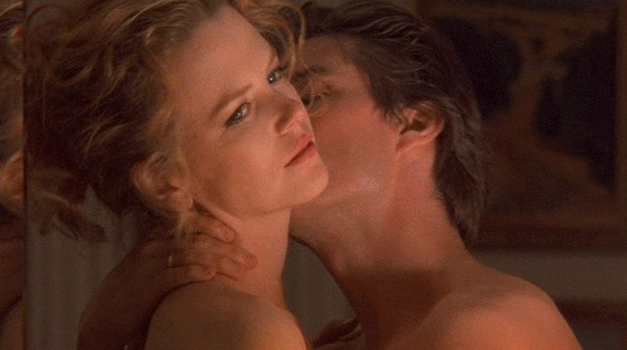The discipline of film editing goes far beyond the knowledge of an editing tool or software. The job of the editor, between technique and art, shows the best of the actors’ performance, of each dialogue, of each action, directs the viewer’s gaze through the world that the director has wanted to create, and definitely controls the rhythm and pulse of the narrative. The great directors in the history of cinema, far from pretending to be “orchestra men” and doing everything themselves, have relied on editors to help them tell, from infinite possibilities, the stories they wanted to tell.
In this course we will explore the techniques of narrative editing of fiction short and feature films, since both have different rhythms, such as short stories and literary novels, and we will work on the types of editing according to film genres. The student will be taught to build from the small to the big, giving meaning to each element and level, in order to be able to carry out the definitive “third scriptwriting”.
“For a writer, it is the word. To a composer or musician, it’s the note. To a film editor or cinematographer, it’s the frame.”
Quentin Tarantino
TEACHER: Jaime Estrada-Torres. IMDB file
Film editor and online picture and sound editor, member of the GBFTE(Guild of British Film and Television Editors). Jaime Estrada-Torres has edited several fiction and documentary feature films working with directors such as Mike Figgis and Werner Herzog, as well as being part of the editing team for films such as Batman (Tim Burton) or Homeboy (Michael Seresin).
Working as a film consultant for the American company Avid, Jaime has been involved in Eyes Wide Shut (Stanley Kubrick), Tomorrow never dies (Roger Spottiswood) and Star Wars Ep. I Phantom Menace (George Lucas) among other productions.
His teaching experience is developed in England, Spain, China, Norway and Iceland. Jaime Estrada-Torres is currently head of the editing department at the London Film School in London.
DURATION: 20 hours
PRICE: 450€.
DISCOUNTS: 10% discount for alumni and 5% discount for film school students.
WHEN: Consult next call for proposals
WHERE: Mass Digital. If you need any kind of information you can contact 709 MR through email or phone (668840783).
COURSE CODE: Forthcoming
MATERIALS USED: Avid Media Composer 6 software on professional Mac workstations (one per student). During the course the students will use materials from the shooting of several feature and short films. For copyright reasons the titles cannot be listed here.
AIMED AT: Editors with some experience who want to deepen their knowledge of fiction editing techniques. Filmmakers, directors and film-makers who wish to understand how to approach the narrative of cinematographic scenes.
PREVIOUS KNOWLEDGE: Autonomous use of the editing tool Avid Media Composer (the basic use of Avid will NOT be taught during the course). Knowledge and practice in film narrative and its application in the editing discipline. The student must provide a CV in the pre-registration process in order to verify this knowledge.
GENERAL OBJECTIVES:
- To promote the understanding of grammatical and aesthetic principles that will allow the film editor to select and manage the cinematographic elements required to construct a scene, to tell a story.
- Establish a criterion of judgment that will serve as a guide for the editor when judging the exact point at which to apply a cut, establish a transition, and impose a rhythm that will contribute to the subjugation of the story to the viewer.
- Establish a discipline in the handling and preparation of work materials: scripts, copying and shot selection, scene assembly, dialogue editing and sound track. In this way, the editor will obtain absolute control over the tools and film material at his disposal, and thus be able to carry out the director’s intentions.
COURSE OUTLINE:
1. Short film editing:
During the first session, each participant will edit a short film.
As working material, each editor will have a working copy, script and pre-selection made by the director.
As an introduction, the process of synchronizing image and sound, and the differences between shooting at 24 and 25 frames per second for both film and high definition will be explained.
The first cut of a scene will be exemplified.
Each participant will edit the short film without supervision.
At the end, each editor should present the preparation notes and the criteria applied in the editing decisions. All this material will be delivered to Jaime. Finally, an evaluation of the work will be carried out among all participants.
2. Cinematographic and editing elements:
The purpose of this presentation is to establish concepts and criteria that allow the film editor to manage dialogue and action in order to create an affective and aesthetically valuable narrative.
This session includes an in-depth analysis of a segment taken from a famous feature film with emphasis on mise-en-scène, camera handling, characters and thematic clarity.
Different cinematographic examples from various genres: drama, action, horror, etc., will be shown and analyzed.
3. Feature Scene
With the use of copying material shot for a Spanish feature film, already commercially distributed, this exercise is focused on the handling of dialogue and shots for dramatic purposes.
During this exercise, all the elements used in the two previous parts are combined.
Each editor will be asked to edit their own version of the scene. Jaime will be available for consultation and guidance throughout the process, and will then analyze each editor’s individual versions.
“If it hasn’t been shot, in the editing room you’re not going to see it.”
Sidney Lumet in “Making Movies”.
You can download the documentation for the course here.


